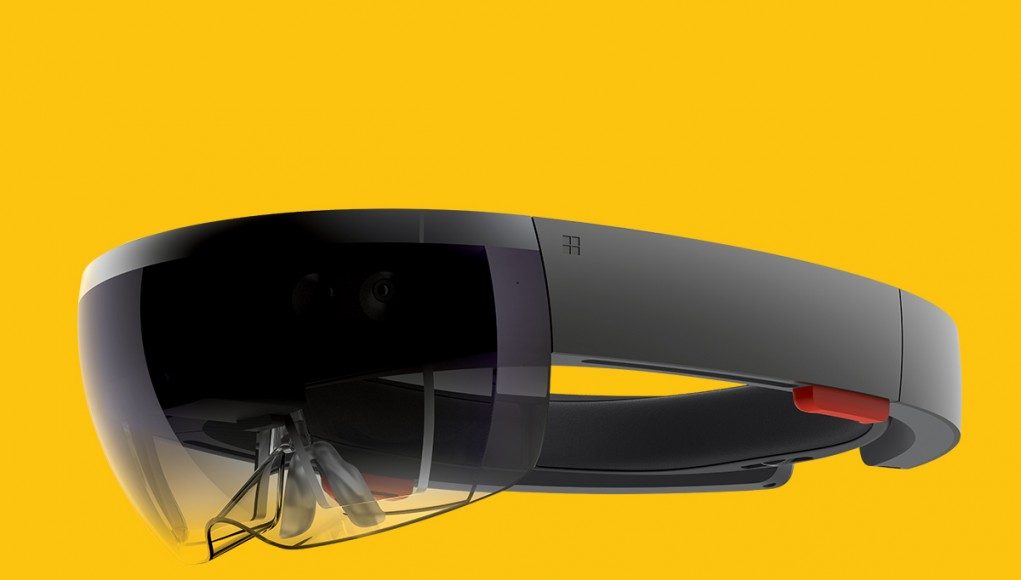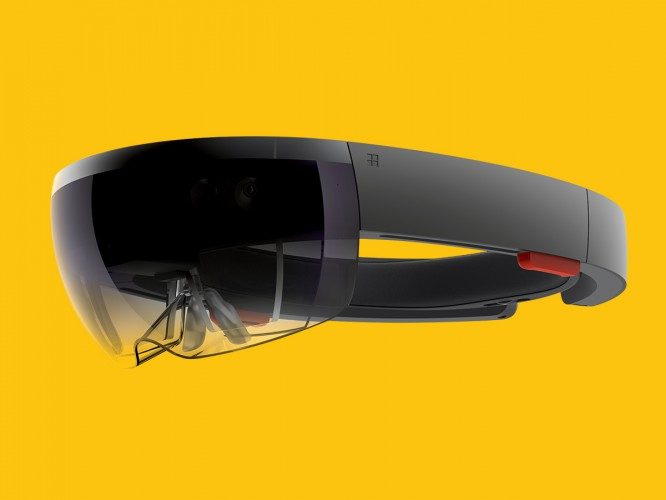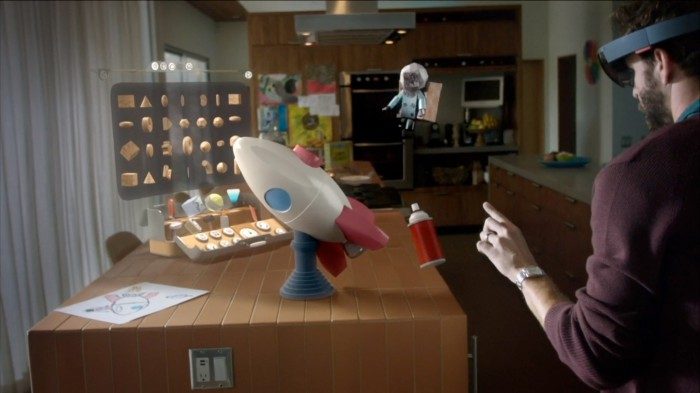We just covered Microsoft’s surprise reveal of it’s new Augmented Reality headset dubbed ‘Hololens’. It seems tech magazine Wired has already seen the device and is seemingly amazed by what they saw.
Windows 10’s promising lineup of new features just got eclipsed completely, at least as far as this journalist is concerned. Microsoft’s Hololens looks every bit the kind of futuristic and fantastical object of desire we enjoy writing about here at Road to VR. It seems though that Hololens is not just a pretty bit of industrial design – Wired has shared details of their hands-on with the device back in October of last year, and they seem mightily impressed.
On the promising design, Wired’s Jessi Hempel is bowled over when confronted with what was then codenamed Baraboo “Oh Baraboo! It’s bigger and more substantial than Google Glass, but far less boxy than the Oculus Rift. If I were a betting woman, I’d say it probably looks something like the goggles made by Magic Leap” before adding “Kipman’s prototype is amazing. It amplifies the special powers that Kinect introduced, using a small fraction of the energy.”
Demo’ing the device to Hempel was Microsoft’s Studio C ‘Chief Inventor’ Alex Kipman. Explaining how the device works he tells Wired “If I could magically turn the debugger on, we’d see photons bouncing throughout this world. Eventually they hit the back of your eyes, and through that, you reason about what the world is. You essentially hallucinate the world, or you see what your mind wants you to see.” exciting stuff.
After trying the device itself, it seems Hololens might really be able to deliver the realistic holograms Sci-Fi fans have always dreamt of. In a demo developed in conjunction with NASA, the device’s ability to not only augment but shift reality becomes apparent:
Another scenario lands me on a virtual Mars-scape. Kipman developed it in close collaboration with NASA rocket scientist Jeff Norris, who spent much of the first half of 2014 flying back and forth between Seattle and his Southern California home to help develop the scenario. With a quick upward gesture, I toggle from computer screens that monitor the Curiosity rover’s progress across the planet’s surface to the virtual experience of being on the planet. The ground is a parched, dusty sandstone, and so realistic that as I take a step, my legs begin to quiver. They don’t trust what my eyes are showing them. Behind me, the rover towers seven feet tall, its metal arm reaching out from its body like a tentacle. The sun shines brightly over the rover, creating short black shadows on the ground beneath its legs.
The device seems to be aimed as a completely new interface for computing, comprising gesture and voice controls alongside MS’s mysterious ‘light engine’. The Kinect-based capture technology sounds impressive, seems that years of iterating on tech that first appeared for the Xbox 360 may now finally be paying dividends.
As for the ‘display’ technology, we can’t wait to find out more details on it, but if the inside-out tracking and scaling abilities of the device hinted at here are correct, MS may well have just unveiled an untethered, inside out positional tracking technology Oculus may find very interesting.
More Coverage:










